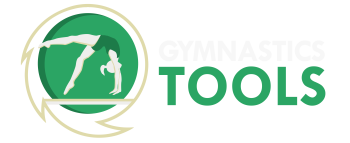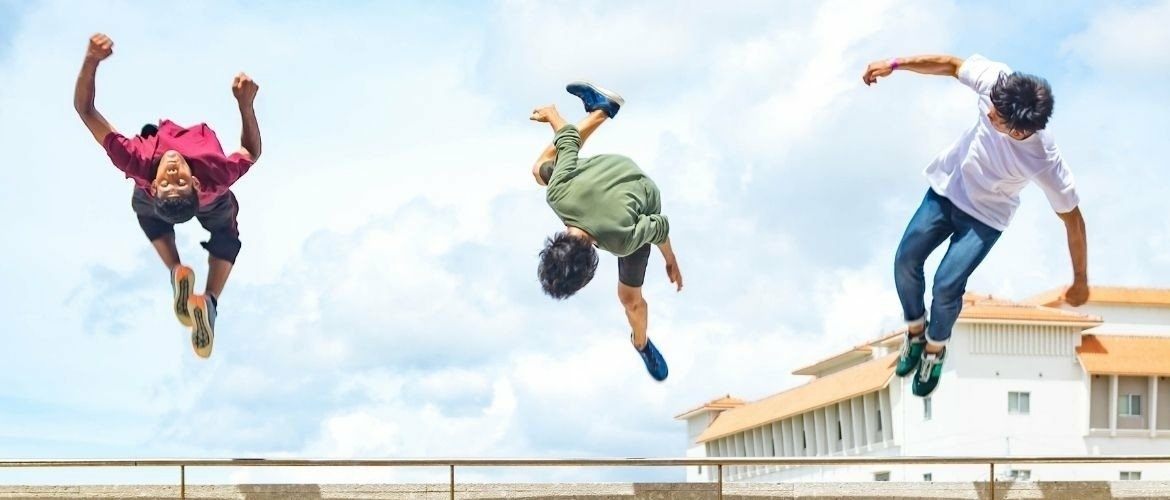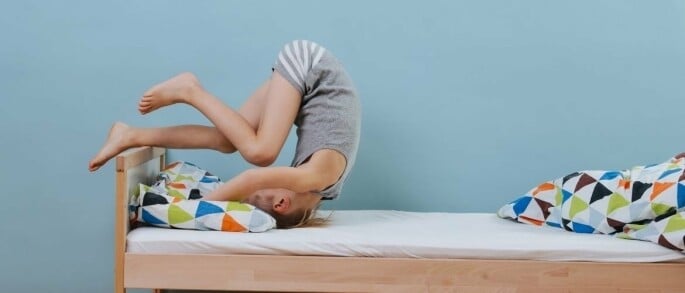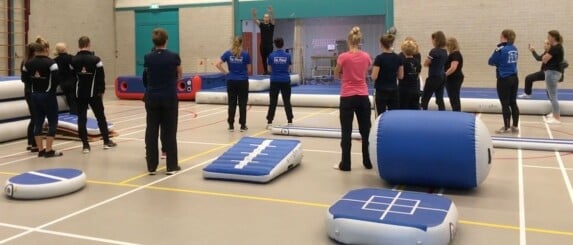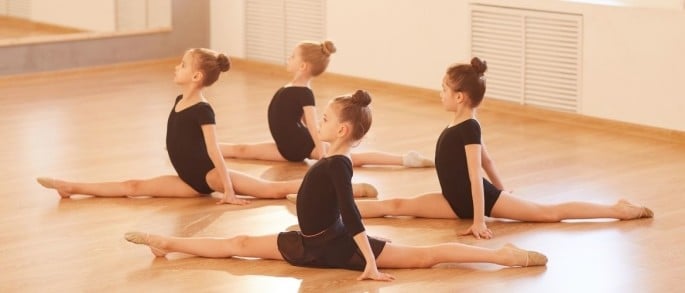Freerunning is a rapidly growing sport. Many young people love freerunning. The great thing about this sport is that as a coach or gym teacher you don’t need a lot of materials for it. And that’s a good thing, because most gyms generally have very little equipment. This makes it very interesting to offer freerun classes in addition to your current gymnastics lessons. Or even start a new freerun group! In this blog article, we show you how you can quickly set up a challenging freerunning class in your own gym (with little equipment).
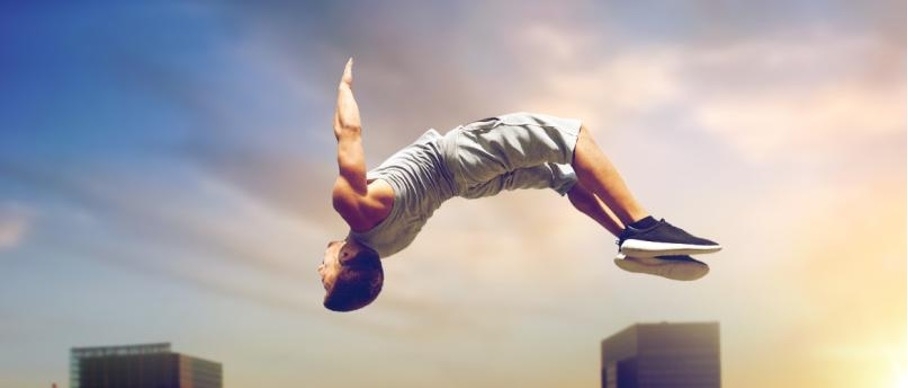
If you are teaching freerunning for the first time, it is of course wise to start with the basics of freerunning. The three basic freerunning exercises to start with are:
1. Safety Rolls
The Safety Roll is a roll that is between a rollover and a barrel roll. You roll over your one shoulder to your opposite hip. With a Safety Roll, it is important that you do not hit your head on the ground or roll all the way down your spine so that you can use it to convert your altitude speed into forward speed after a big jump.
You can easily practise this on a small mat from a stretch jump or by jumping off an elevation followed by a Safety Roll.
To find more of a challenge, you have to look for more height. Most gymnasiums have a wall rack that makes this easy. Hold the wall bars upright and place a thick mat on top. Have the students jump from the wall rack to the thick mat with a Safety Roll. This is a fun way for the pupils to learn how to roll and break their fall.
If you have two thick mats, you can also put one of the two thick mats upright. This allows the pupils to climb the thick mat, slide off and then do a safety roll. Most boys (and girls) love this. This quickly fills a large part of the first freerunning lesson!
2. Precisions
With precisions you practise jumps that can be made while running or from a standing position in order to jump over a hole and land on a certain point. Often you land on a narrow surface. In a gymnasium you usually have at least 6 benches. Gym benches are ideal for practising precisions. Put them in a row with different distances and you have filled your freerunning lesson with an extra theme!
3. Climb-up
A climb-up usually involves climbing a (high) wall/obstacle. To be able to do this, pupils must be able to run up a wall. Also called a vertical wallrun. A climb-up can be practised by having pupils climb over different cupboard heights or by having them climb up a sloping thick mat.
4. Safety Vault
When you have progressed a bit with the students, there are a lot of other exercises to use in the gym. For example, the safety vault
– Put your outer hand and outer foot on the Block
– Pull your inside foot in between and put it over the Block back on the ground
Tips safety vault:
– The Safety Vault is easier if you have speed
– Make sure your hand is on the Block a little earlier than your foot
– Make sure you take off with one leg
5. Speed Vault
Speed Vault is a similar move to Safety Vault, only you don’t put your foot down on the Block but keep it in the air.
– Jump in the same way as a Safety Vault
– Put your outer hand on the cupboard and kick your outer foot up just above the Block
– Make a scissor movement with your feet (the inner foot goes forward and the outer foot backward)
– Put your inner foot down on the ground
Tips speed vault:
– The Speed Vault is easier if you have speed
– Look in the direction you want to go
– Make sure you take off with one leg
6. Lazy Vault
Lazy Vault is a vault where the bet is made with the same hand and foot, but only your hands may touch the Block. If you place your right hand on the block, swing your right foot over it immediately, followed by your left leg. As a last picture, push your left hand away.
Of course, the vault can also be used the other way round.
7. Kong
The kong is very similar to the squatting/through squatting in gymnastics. After the push-off, place two hands on the block at the same time, then push off with your hands and place your feet between your arms and over the block on the ground.
Tips kong:
– The Kong may be dropped with one or two feet at a time. For a Kong, a split-step drop is often easiest
– You can also start with monkey-up. First put your hands on the block and then your feet between your hands on the block. If this is going well, you can do the whole Kong.
8. Dash
In a dash, you first jump over a block or a cupboard and then drop with your hands.
Tips dash:
– Create enough speed to be able to jump over the Block
– Lean back a little so that you can put your hands together.
Do you have several cabinets, blocks and trapezoids available in the gym? Then you can practice the dash on them!
And do you have one or more beams that might be in the way in your gym? Then use them for your freerun class. First start with the squat/over squat/kong and later the dash.
9. 360 reverse
A fun but somewhat more challenging exercise for students is the 360 reverse. A 360 reverse can be performed in various ways. The easiest way is to place two hands sideways on the box and then make a complete turn over the Block. It is also possible to perform the 360 reverse on one hand; in this case, it is easiest to perform the jump with only your second hand. If you can do a 360 reverse on one hand, you can also turn it over your back and into your second hand.
10. Barrel roll
The barrel roll is a fun way to practice rolls. For gymnastics, it is also an ideal way to prepare for side somersaults and aerials. It will surprise you how much fun girls have doing the barrel roll! The Barrel Roll is a lateral roll on your back over a block. You can use the Barrel Roll as a sideflip. Start sideways and then pull your hands in front of the block, after which you roll over the block on your back.
11. Wallspin
The wallspin is a freerun exercise which may not be missed in your freerun lesson. Wallspin can be done in two different ways, you can make it over a standing object but also against a sloping or straight wall. Often you place 1 hand below and 1 hand above the wall and turn over your bottom hand.
It is a good idea to first build up the wall spider quietly with a cabinet or block.
Should it be difficult to practise the wallspin. Then it can certainly help to start with a cartwheel. In practice, many pupils have difficulty with the breaststroke. With the breaststroke you practise the correct wallspin and they also have the same experience of going upside down.
12. Ball Out
A Ball-Out is a somersault to the back. Because the Block is bounced softly, it is also possible to do a somersault onto your back.
A Ball-Out is especially useful to train the second part of the somersault. You have to stay small in order to land on your feet, and you can also practise stepping out to somersault or arabic. Because the ball out is a strange movement for some pupils, it is wise to start with a gliding roll. The ball out is actually an intermediate step between a gliding roll and a somersault. It is a gliding roll that rotates a little further, which gives you the opportunity to “bounce” up to your back.
Tips ball out:
– Always start with a float roll
– Always keep your chin to your chest when balling out
For balling out, it is nice to have an air track in the hall. Fortunately, an air track is easy to inflate and quickly put away again.
13. Cat Leap
The cat leap is a jump towards a wall, from which you then hang on the edge. In itself, a cat leap seems very simple. The nice thing about it is that you can practise it very easily in the gym and can differentiate a lot with the materials you have.
Of course, you can also practice the cat leap by jumping towards a bar or a rack instead of a wall.
14. Side flip
A Side Flip is actually a kind of Barrel Roll but in the air. Make sure you make a quarter turn at the entry and then initiate the Side Flip; try to keep the flip sideways and not turn to half-screw.
Tips side flip:
– The starting position of the Side Flip is the same as that of a Front Flip, but then turned in a quarter turn.
– Then stretch out to the side as if trying to grab something.
– Then lean forward to engage the Flip itself.
15. Wall flip / wall somersault
The wallflip is the same as a somersault against a wall. Wallflips can be done in two different ways: you can do them over a standing object or against a sloping or straight wall. Almost every student would like to learn a wall flip.
Often you put one foot against the object and throw up your other leg, making a somersault. To most teachers, a wallflip sounds like a dangerous skill to teach. Yet you can easily use methodical exercises to build it up safely. Check out the Freerun Platform for over 250 practice steps.
16. Kick to the Moon
The Kick to the Moon is a somersault in which you push off with one leg and swing the other. Kick to the Moon is very easy to build up, the only requirement is that you can do a backwards somersault from a Block or a box. It is wise to first pay a lot of attention to the wallflip or backwards somersault before continuing with the kick to the moon.
-> Make a backflip with 2 feet from the Block
-> Make a backflip with one foot from the Block.
-> Now turn a quarter and make the same backflip, but now to the side.
-> Still make the same backflip, but make one pass before it.
-> Now stand straight and make 2 or 3 steps and make a J-Step where you turn in about a quarter during your run and kick up your leg.
-> First reduce the height before making Kick to the Moon on the ground.
Tips kick to the moon:
– Always turn your foot a little further in at J-step than completely parallel to the Block.
– Kick with a straight leg for extra speed.
– Throw your arms up too.
17. Parkour
When you have already done a lot of freerunning exercises with your pupils, you can of course combine them. Let the pupils make their own parkour and perform more tricks in a row. You’ll be amazed at all the things your pupils will show!
Additional freerunning exercises
We can well imagine that it is exciting to give your first freerunning lesson. Fortunately, you can easily put together a safe freerunning lesson with few materials.
Of course, we are also very curious to know whether you have been able to make use of all the exercises and tips. Let us know in the comments!
Do you want more exercises? Check out our Youtube channel or join the Gymnastic Tools Platform and get access to all 2500 methodical exercises.
